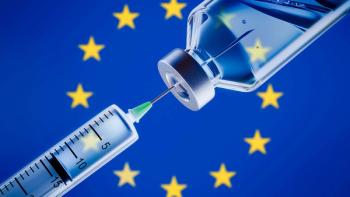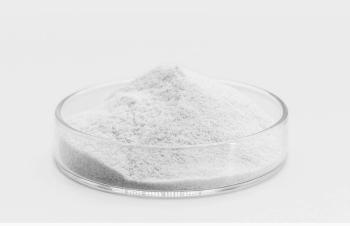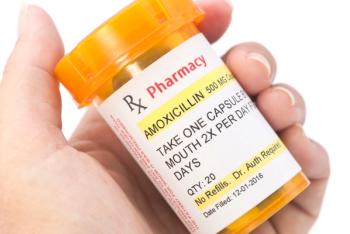
- Pharmaceutical Technology-03-02-2013
- Volume 37
- Issue 3
Navigating the Global Manufacturing Supply Chain
As the strategic value of emerging markets increase, pharmaceutical companies increase their R&D and manufacturing investments.
Emerging markets are an important part of the pharmaceutical majors' growth strategy. As these markets become of increasing strategic value, pharmaceutical companies are ramping up investment in R&D and manufacturing (API and finished drug product) in these areas.
JORG GREUEL/GETTY IMAGES
Evaluating the market
Emerging markets are playing an increasingly important role in overall pharmaceutical industry growth. The global market for medicines is expected to rebound from a recent low of 3-4% growth in 2012 to 5-7% growth in 2016, according to a July 2012 analysis by the IMS Institute for Healthcare Informatics. Growth will primarily be from emerging markets as growth in established markets in the United States, Western Europe, and Japan remains weak comparative to historical levels. Overall, annual global spending on medicines will rise from $956 billion in 2011 to $1 trillion by 2013, and to nearly $1.2 trillion in 2016, representing a compound annual growth rate (CAGR) of 3% to 6%. For purposes of the IMS analysis, spending is reported as ex-manufacturer prices and does not reflect off-invoice discounts and rebates and is converted from local currencies to US dollars. Absolute growth in global pharmaceutical spending between 2012-2016 will be between $220 billion and $250 billion, compared with $298 billion in the prior five years.
Growth in annual global spending is forecast to more than double in 2016 to as much as $70 billion, up from a $30-billion pace in 2012, driven by volume increases in what IMS terms the "pharmerging" markets and some uptick in spending in developed nations. The "pharmerging" markets are defined by IMS as countries with greater than $1 billion in absolute spending growth between 2012-2016 and that have gross domestic product per capita of less than $25,000 at purchasing power parity. Using that criteria, China is classified as a Tier-1 country, and Brazil, Russia, and India as Tier-2 countries. Tier 3-countries are Mexico, Turkey, Poland, Venezuela, Argentina, Indonesia, South Africa, Thailand, Romania, Egypt, Ukraine, Pakistan, and Vietnam.
IMS projects that healthcare systems in pharmerging markets will nearly double their medicine spending over the next several years. Annual spending on medicines in the pharmerging markets will increase from $194 billion in 2011 to between $345 billion and $375 billion by 2016, or $91 in drug spending per capita, according to IMS. The increase will be driven by rising incomes, continued low cost for drugs, and government-sponsored programs designed to increase access to treatments. Generic drugs and other products, including over-the-counter medicines and diagnostics will account for approximately 83% of the increase.
A BRIC focus
Among the emerging markets, the BRIC (Brazil, Russia, India, and China) countries represent the largest areas of pharmaceutical industry growth. China's pharmaceutical market was valued at $66.7 billion in 2011 and is expected to reach between $155 billion and $165 billion by 2016, representing a CAGR of 15% to 18% between 2012-2016, according to IMS. Brazil's pharmaceutical market was valued at $29.9 billion in 2011 and is expected to reach between $42 billion and $52 billion by 2016, representing a CAGR of 12% to 15% from 2012-2016. Russia's pharmaceutical market was valued at $15.7 billion in 2011 and is forecast to be between $23 billion and$33 billion by 2016, representing a CAGR of 10% to 13% from 2012-2016. And India's pharmaceutical market was valued at $14.3 billion in 2011 and is expected to reach between $24 billion and $34 billion by 2016, representing a CAGR of 14% to 17%, according to IMS.
Based on these projections, China will move into second place in the global pharmaceutical market by 2016, surpassed only by the United States, which will continue to hold the number one position on a global basis, according to IMS. Brazil will move into fourth place, India into eighth place, and Russia into ninth. Among developed markets, Japan will drop from the second largest global market to the third by 2016. Germany and France will each drop a notch, from fourth and fifth, respectively, in the global rankings in 2011, to fifth and sixth in 2016 as projected by IMS. Italy will stay in seventh spot in 2016, the same position it occupied in 2011. The developed markets of Spain, Canada, and the United Kingdom, respectively ranked as eighth, ninth, and tenth in 2011, will be eclipsed by Russia and India in the global rankings by 2016, according to IMS projections.
Company activity
China. The pharmaceutical majors are pursuing direct investment in R&D and manufacturing as well as partnership strategies in emerging markets (1-2). Some recent investment in China by the pharmaceutical majors includes Hisun-Pfizer Pharmaceuticals, a joint venture formed between Pfizer and the Chinese pharmaceutical company Zhejiang Hisun Pharmaceuticals with the aim to develop, manufacture, and commercialize off-patent pharmaceutical products in China and other markets. In May 2012, Sanofi inaugurated a new assembling and packaging line for producing its prefilled insulin injection pen Lantus SoloStar at its facility in Beijing. The company announced a second phase $90-million project to install a cartridge aseptic product line at the facility.
Novartis has been actively building its position in China. In 2007, Novartis opened a start-up facility for a new R&D center in Shanghai, China, and broke ground in 2008 on Phase I of a new facility that was originally to be home to approximately 400 R&D scientists and approximately 400 other pharmaceuticals division personnel. In 2009, it expanded the scope of the site with plans to invest $1 billion during the next five years to increase the size of its operations in Shanghai. Based on a re-evaluation of the site conducted in 2010, the current Phase 1 has been extended by two buildings. The cross-divisional Shanghai campus will house 800 offices and 400 laboratory workplaces
In 2012, Eli Lilly opened a new diabetes R&D center in Shanghai. The center employs 150 scientists and staff hired primarily from China. Eli Lilly also is constructing a new insulin production, packaging, and warehouse facility in Suzhou, China, which was schedule to open in late 2012. In June 2012, Eli Lilly announced an expansion of its manufacturing capabilities in China through an expanded collaboration with Novast Laboratories, a generic-drug and specialty pharmaceutical company based in Nantong, China. The collaboration will enhance Lilly's efforts to build a portfolio of Lilly branded generic medicines in China, and eventually may be used to provide regional manufacturing support for Lilly's pipeline of products in development.
For Roche, a key project included transforming its manufacturing facility for solid dosage forms in Shanghai from a local to a global supply operation. In early 2011, the facility received FDA and EMA approvals to produce Xeloda (capecitabine) for the US and EU markets.
Russia. Unlike other BRIC countries, such as India and China, which have a domestic manufacturing base, Russia is largely dependent on pharmaceutical imports. Its domestic biomedical industry accounts for only 0.2% of the global market, but the country is committed to change that level through an ambitious program, Pharma 2020. Pharma 2020, a state-initiated plan, seeks to boost output of local medicines from 25% of gross sales in 2010 to 50% by 2020, upgrade domestic pharmaceutical manufacturing operations to GMP standards, and increase the level of innovator pharmaceuticals in the Russian market (3). Several pharmaceutical majors are increasing their presence in Russia with manufacturing and R&D investment (1-2).
In September 2012, Takeda Pharmaceutical completed construction of a EUR 75 million ($99 million), 24,000-m2 pharmaceutical manufacturing facility in Yaroslavl, Russia. The plant, which is approximately 280 kilometers from Moscow, is one of the first by a major multinational company in Yaroslavl's pharmaceutical cluster. The facility is expected to be fully operational by 2014.
The Yaroslavl facility will enable Takeda to meet demand in Russia initially for several products: Cardiomagnyl (acetylsalicylic acid and magnesium hydroxide), Actovegin (derived from calf blood), and calcium tablets. The plant will have the initial capacity to manufacture 90 million sterile ampuls and more than two billion tablets per year. Liquid-sterile production includes solution preparation, washing of ampuls, sterilization, filling, inspection, and packaging. Solid production will encompass all stages, from weighing, mixing, and granulation through compression, coating, and packaging. Takeda estimates that it is the seventh largest pharmaceutical company in Russia and expects company annual growth rate of 15% in Russia through 2016.
In April 2012, Novo Nordisk broke ground on a new $100-million plant in Russia that will formulate and fill insulin into Novo Nordisk's Penfill cartridges and pack the FlexPen prefilled insulin delivery device for the Russian market. Located in Grabtsevo Technopark in the Kaluga region, the plant is expected to start manufacturing in 2014. The company's intention to establish insulin production in Russia was first announced in 2010. At that time, an agreement of cooperation between the government of the Kaluga Region and Novo Nordisk was signed. Sanofi also recently increased insulin capacity at its facility in Orel, Russia. Sanofi obtained the facility following its acquisition of a controlling stake in the pharmaceutical company Bioton Vostok in 2010.
Novartis is proceeding with a new $140-million manufacturing plant for pharmaceuticals and generic drugs in St. Petersburg, Russia. The plant is expected to produce approximately 1.5 billion units per year (oral solid dosage forms). The greenfield facility is in the Novoorlovskaya Special Economic Zone located to the north of the St. Petersburg city center. Novartis began construction of the facility in 2011. The facility is expected to be completed and approved for commercial production in 2014.
The facility is part of a five-year, $500-million investment into Russian healthcare infrastructure announced by Novartis in December 2010. This plan addresses three core areas: local manufacturing, R&D collaborations, and public health development in Russia. These activities include collaborations with academia and emerging Russian private businesses in different areas of medical science. The scope of these collaborations may include efforts, such as out-licensing of Novartis compounds to Russian companies with proven scientific capabilities, in-licensing and scouting for promising drug candidates from Russian scientists and universities, and modeling and simulation activities for clinical trials. Novartis is working in all of these areas to identify high potential projects to be jointly developed. Additionally, Novartis also has made a commitment to double its investments in drug development in clinical trials in Russia and expects to enroll approximately 4000 individuals by 2013, said the company in announcing its plans in December 2010.
In 2011, AstraZeneca announced plans to establish a Predictive Science Center in St. Petersburg, the company's first such center in Russia. The center will focus on developing bioinformatices, data-analysis methods, software, and systems to evaluate safety and efficacy of new drugs. Approximately 30 people will be employed at the center through local collaborations and organizations. Also in 2011, AstraZeneca began construction of a new $150-million manufacturing facility in the Kaluga region in Russia to supply locally produced medicines. The company also has partnerships with several R&D institutes in Russia, including the Skolkovo Innovation Center and Russia Venture Company, for research and clinical trials.
In July 2012, Pfizer granted exclusive development and marketing rights to the Russian firm SatRx for its dipeptidyl peptidase-4 (DPP-4) inhibitor PF-00734200 for Type 2 diabetes.SatRx, which is part of the ChemRar Hi-Tech Center, received worldwide rights (excluding China) to the drug as a monotherapy or in combination with other diabetes drugs. Pfizer will receive royalties and milestone payments based on commercialization activities. The agreement was developed as partial fulfillment of a memorandum of understanding reached in March 2011, under which Pfizer and ChemRar agreed to explore collaborations focused on research, development, and commercialization of compounds and vaccines to treat cardiometabolic, infectious and oncologic diseases in Russia and other countries.
In 2010, GlaxoSmithKline formed an alliance with JSC Binnopharm for the local secondary manufacture of several GSK vaccines. Under this alliance, which was announced in November 2010, GSK is supplying bulk vaccine and providing technology and expertise to enable Binnopharm to undertake the secondary manufacture, including filling and packaging of GSK vaccines. Binnopharm will be responsible for gaining approval of their facilities to allow supply of GSK cervical cancer, rotavirus, and pneumococcal vaccines under Binnopharm's trademark for the Russian public market.
Reference
1. P. Van. Arnum, Pharm. Technol. 36 (8), 38-42 (2012).
2. P. Van Arnum, Pharm. Technol. Sourcing and Management, 8 (10), 2012.
3. G. Peach, "Russia Pledges $4 billion for Pharma-2020 Plan," Nature Medicine online, doi:10.1038/nm0511-517 (2011).
Articles in this issue
almost 13 years ago
Sterilizing with Nitrogen Dioxidealmost 13 years ago
Advancing analytical testing and instrumentation for biopharmaceuticalsalmost 13 years ago
The Role of Analytical Science in Implementing Quality by Designalmost 13 years ago
Relevance Regainedalmost 13 years ago
Adhering to ICH Q7 for GMPsalmost 13 years ago
Nanoparticles: Facilitating Targeted Drug Delivery in Cancer Therapyalmost 13 years ago
Conforming to the IPEC CoA Guidealmost 13 years ago
Europe and the United States to Negotiate a Free-Trade Agreementalmost 13 years ago
Regulatory RoundupNewsletter
Get the essential updates shaping the future of pharma manufacturing and compliance—subscribe today to Pharmaceutical Technology and never miss a breakthrough.




